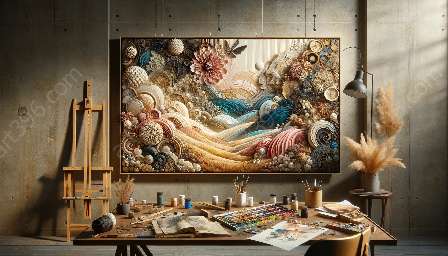Mixed media art is a versatile and dynamic form of artistic expression that incorporates a wide range of materials and techniques. Composing a successful mixed media piece involves a deep understanding of the key principles of composition and the ability to effectively integrate various elements into a cohesive and compelling artwork.
Introduction to Mixed Media Art
Mixed media art is an art form that combines different materials and mediums to create unique and visually stimulating compositions. It can include a combination of traditional artistic mediums such as painting, drawing, and sculpture, as well as unconventional materials like fabric, found objects, and digital elements. The possibilities are endless, and the creative freedom offered by mixed media art allows artists to explore new ways of storytelling and self-expression.
Understanding Composition in Mixed Media Art
Composition is the arrangement of visual elements within a work of art, and in mixed media art, it plays a crucial role in creating balance, harmony, and visual interest. The key principles of composition in mixed media art encompass a range of elements and techniques that come together to form a cohesive and impactful artwork.
Key Principles of Composition
1. Balance: Achieving balance in a mixed media piece involves distributing visual elements such as color, texture, and form in a way that creates a sense of equilibrium. Artists can achieve balance through symmetrical or asymmetrical arrangements, but the key is to ensure that no single element overpowers the composition.
2. Unity: Unity refers to the cohesive and harmonious integration of various elements within a mixed media artwork. It involves finding common threads that tie the different materials and techniques together, creating a sense of cohesion and purpose.
3. Emphasis: Emphasis is the principle of drawing attention to a focal point or area within the artwork. In mixed media art, artists can use various techniques such as contrast, positioning, and scale to create emphasis and guide the viewer's eye through the composition.
4. Rhythm: Rhythm in mixed media art involves creating a sense of movement and flow through the arrangement of visual elements. Artists can establish rhythm through repetition, pattern, and directional cues, imparting a dynamic energy to the artwork.
5. Proportion: Proportion relates to the size and scale of elements within the composition. In mixed media art, artists can manipulate proportion to create visual interest and convey a sense of depth and dimension.
Techniques for Achieving Compelling Composition
Now that we've explored the key principles of composition in mixed media art, let's delve into some techniques that artists can employ to achieve compelling and effective compositions:
- Layering: Building layers of different materials and mediums adds depth, texture, and visual richness to a mixed media piece, contributing to a multidimensional composition.
- Collage: Collage is a fundamental technique in mixed media art, allowing artists to combine and juxtapose disparate elements to create visually engaging compositions with a sense of narrative and depth.
- Transparency and Opacity: Playing with transparency and opacity of materials and mediums can create intriguing visual effects and contribute to the overall balance and harmony of the composition.
- Texture Mapping: Incorporating varied textures and surfaces within the artwork adds tactile and sensory dimensions, inviting the viewer to explore the composition on multiple levels.
- Visual Diaries: Keeping visual diaries or sketchbooks enables artists to experiment with different compositions, techniques, and materials, fostering creativity and honing their compositional skills.
Conclusion
By understanding and applying the key principles of composition, as well as exploring the diverse techniques available in mixed media art, artists can create captivating and expressive artworks that resonate with viewers on a deeper level. The endless possibilities and creative freedom of mixed media art make it a truly unique and enriching form of artistic expression, allowing for boundless innovation and personal storytelling.

